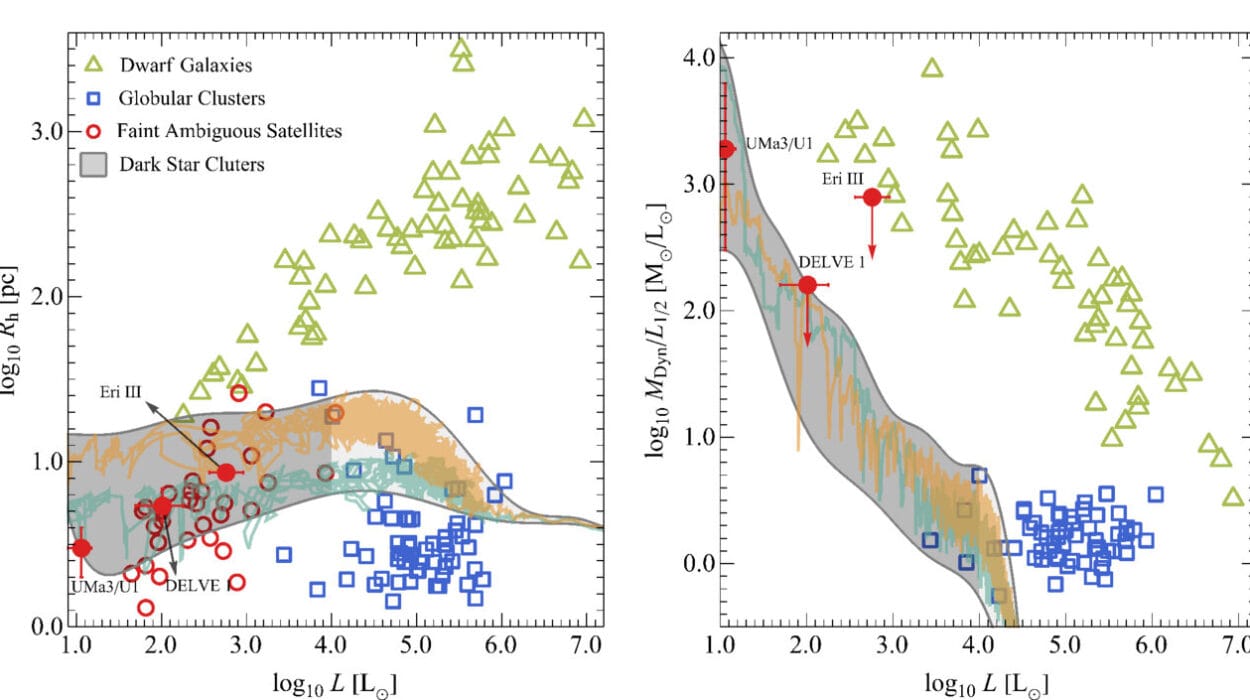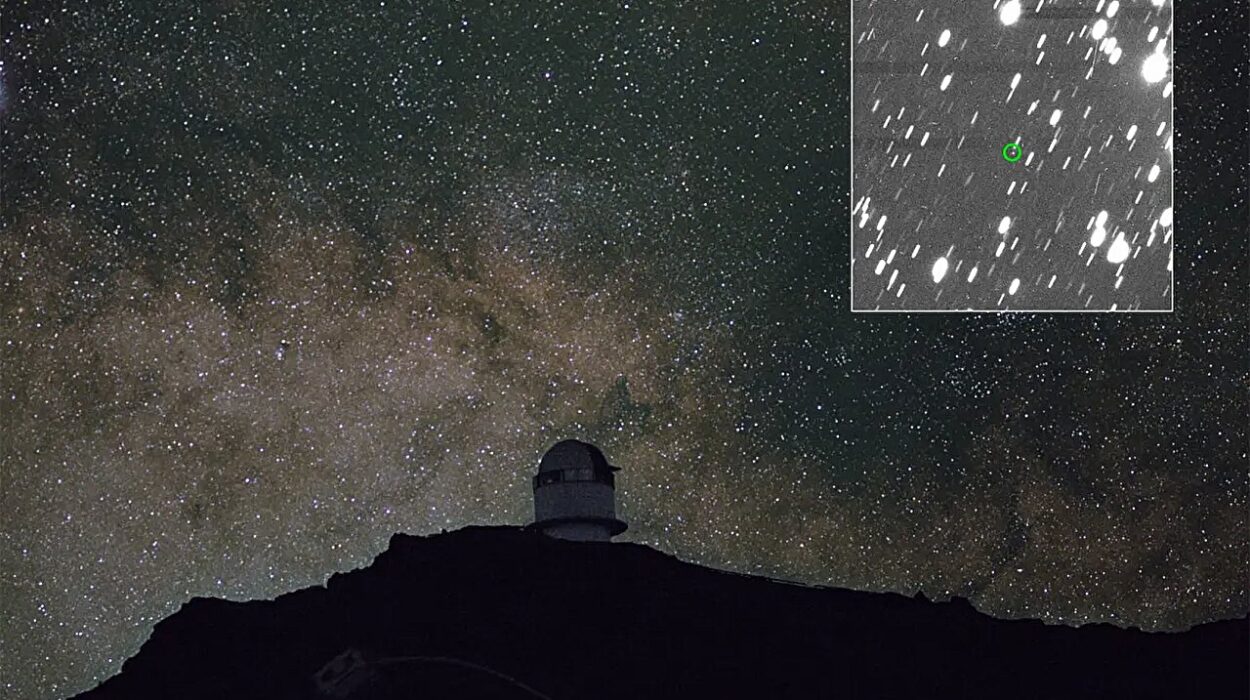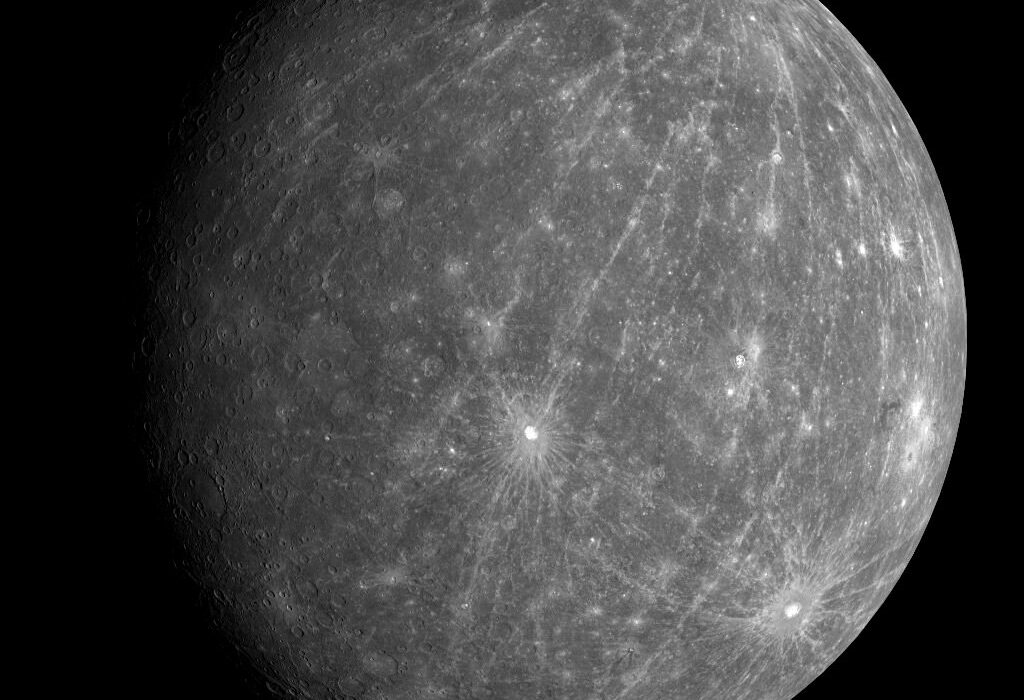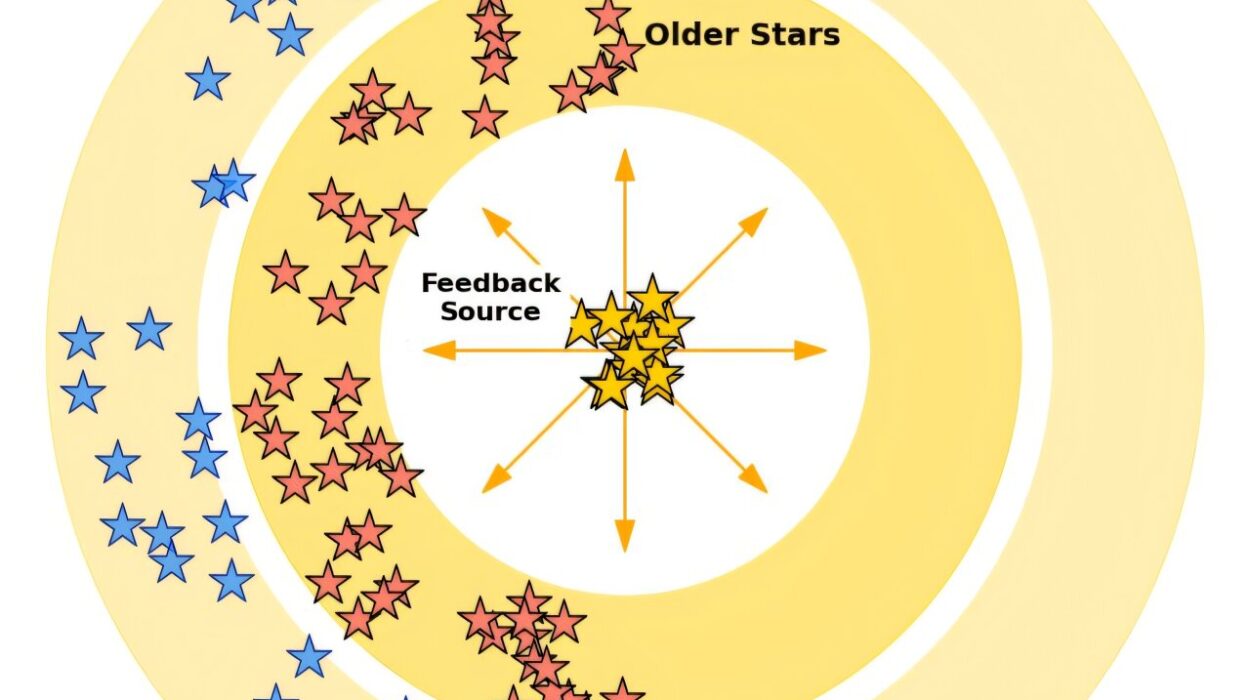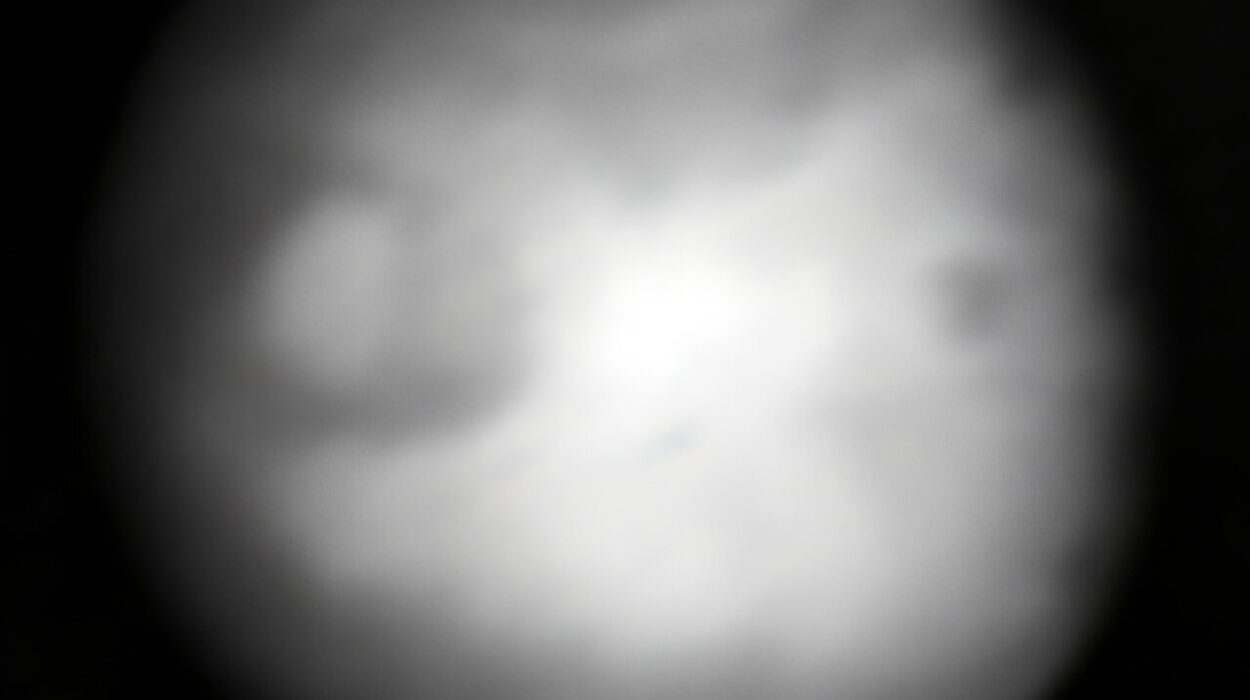The universe, vast and ancient, is mostly invisible. Stars, planets, and galaxies — the luminous tapestry we can see — make up less than 15% of the total matter in existence. The rest is dark matter, an unseen substance that exerts gravity but emits no light. It shapes galaxies, governs cosmic evolution, and yet remains one of science’s greatest enigmas. For decades, researchers have searched for it with detectors buried deep underground, satellites orbiting Earth, and particle colliders smashing atoms together. But now, a new idea is emerging from the most mysterious regions of all — the shadows of black holes.
According to a study published in Physical Review Letters, black holes might do more than warp space and time. They could help reveal what dark matter truly is. Using images captured by the Event Horizon Telescope (EHT), scientists are beginning to view black hole shadows not just as cosmic silhouettes, but as ultra-sensitive detectors that could pick up faint traces of invisible particles swirling in the darkness.
The study’s co-authors, Jing Shu of Peking University and Yifan Chen of the Niels Bohr Institute, believe that these shadows could hold the answers hidden in plain sight. “I have always been fascinated by instruments like the Event Horizon Telescope,” Shu said, “which allow us to probe the extreme environments around supermassive black holes and challenge the boundaries of known physical laws.” Chen added, “Black holes act like natural concentrators of matter, making them unique meeting points for particle physics, gravity, and astrophysical observation.”
A Telescope That Sees the Unseeable
The Event Horizon Telescope is not a single telescope but a global orchestra of radio observatories working in perfect harmony. By synchronizing signals across the world through a technique called Very Long Baseline Interferometry, the EHT achieves the resolving power of a telescope the size of Earth itself. It observes at a frequency of 230 gigahertz, capturing the radiation emitted by electrons spiraling along intense magnetic field lines near black holes.
It was this incredible collaboration that, in 2019, gave humanity its first-ever direct image of a black hole — the glowing ring around M87*, 55 million light-years away. Later, in 2022, the EHT revealed the shadow of Sagittarius A*, the supermassive black hole at the heart of our own Milky Way. These images showed not only the warping of spacetime but also something unexpected: an opportunity to study the invisible.
To interpret these mysterious images, astrophysicists rely on complex simulations. Among them, one model stands out for its accuracy and elegance — the Magnetically Arrested Disk (MAD) model. This model portrays black holes surrounded by disks of matter so magnetically charged that they regulate the inflow of gas and launch jets of plasma into intergalactic space.
The MAD model explains why black hole images show a dark central region: the accretion disk glows with energetic electrons, but the jet regions above and below are relatively barren. This contrast produces the haunting shadow — a window into the most extreme gravitational environment known.
The Dark Matter Connection
Here is where dark matter enters the story. While ordinary plasma is often ejected by the black hole’s jets, leaving the shadow faint, dark matter could behave differently. Because it is expected to cluster densely around black holes due to their immense gravity, dark matter might continuously inject new particles into the surrounding space. These particles could radiate weak signals that blend subtly with the glow of the accretion disk.
Chen describes the shadow as “a cosmic darkroom” — an environment so dim that even faint emissions from dark matter annihilation could stand out. If dark matter particles collide and annihilate near the black hole, they might produce electrons and positrons that radiate light, adding a faint signature inside the dark zone.
This idea transforms the black hole shadow into a kind of detector — one that doesn’t need wires, sensors, or laboratories. Nature itself becomes the instrument, powered by gravity, magnetism, and light.
Modeling the Invisible
To test this revolutionary concept, the researchers combined general relativity, particle physics, and magnetohydrodynamics — a complex union of disciplines that mirrors the universe’s own harmony. Their framework extends the MAD model by incorporating dark matter physics directly into realistic simulations.
Using general relativistic magnetohydrodynamic (GRMHD) modeling, they tracked how hypothetical dark matter particles might behave near a supermassive black hole. When these particles annihilate, they could produce streams of electrons and positrons. The team simulated how these new particles would move within the black hole’s magnetic fields and how their radiation might appear in the EHT’s images.
Unlike earlier studies that treated black holes as perfect spheres or relied on simplified assumptions, this approach used detailed, asymmetric magnetic field structures drawn directly from real EHT observations. This realism matters, because the geometry of a black hole’s environment dictates how light — and potential dark matter signals — behave.
As Shu explained, “What we see in black hole images is not the black hole itself, but light emitted by ordinary electrons in the surrounding disk. If dark matter particles were annihilating near the black hole, they would produce extra electrons and positrons whose radiation looks slightly different from the normal emission.”
The Signature in the Shadow
The key difference lies in distribution. In the MAD model, most electrons are confined to the accretion disk, leaving the shadow region dark. But if dark matter annihilation occurs, the resulting particles would be spread more evenly across the disk and jet regions. The shadow would glow faintly where it should be darkest — a quiet but unmistakable whisper of the unseen.
The team simulated various dark matter scenarios, testing annihilations into bottom quarks and electron-positron pairs across masses ranging from below one gigaelectronvolt to around ten teraelectronvolts. Each scenario generated unique radiation patterns, which they compared to the EHT’s real images.
Their method goes beyond simply measuring brightness. It focuses on morphology — the detailed shape and texture of the black hole’s light. By examining how the structure of the glow changes across the shadow, the researchers can identify deviations that might indicate the presence of dark matter.
Shu called it a “morphological probe,” and its power is extraordinary. Even subtle differences in the pattern of light can set stringent limits on what dark matter is or is not. Using current EHT data, the team was able to rule out vast regions of previously unexplored dark matter parameter space, reaching sensitivities surpassing many terrestrial experiments.
The Power of Cosmic Observation
Chen noted that these results already push the boundaries of what scientists thought possible. The analysis remains robust even when accounting for uncertainties in black hole spin, magnetic field strength, and plasma temperature — variables that often complicate astrophysical studies.
This robustness means that black hole imaging is not just a new idea; it is a practical, reliable path forward. The shadow becomes more than a symbol of cosmic mystery — it becomes an instrument for discovery, bridging the gap between astrophysics and particle physics.
The Future of Dark Matter Hunting
The potential only grows from here. Future upgrades to the Event Horizon Telescope promise sharper, more dynamic views of black holes than ever before. Planned improvements could boost the EHT’s dynamic range — its ability to reveal faint structures near bright regions — by a factor of one hundred.
As Chen explains, “It’s like the high dynamic range (HDR) mode in smartphone cameras. It lets us see detail in both the dark shadows and bright highlights, revealing what was invisible before.”
These enhancements could make it possible to detect dark matter annihilation signals with cross sections approaching the so-called thermal relic value — the level predicted by many leading dark matter theories. If achieved, this would bring us tantalizingly close to solving a mystery that has haunted physics for nearly a century.
Beyond Static Shadows
Shu and his colleagues emphasize that black hole shadows are not static photographs — they are dynamic laboratories. Future observations could capture how the shadow flickers, how its polarization changes, and how magnetic fields twist and dance over time. Each of these dimensions adds new information about the matter and energy near the event horizon.
Polarization measurements, already part of EHT’s toolkit, offer particular promise. Because polarization encodes how light interacts with magnetic fields, it could distinguish between ordinary plasma and exotic particle emissions — another potential clue pointing to dark matter.
In addition, multi-frequency observations could act like a prism, separating light by energy and revealing different radiation mechanisms. By observing the same black hole at several frequencies, scientists can compare how various signals behave, disentangling ordinary astrophysical glow from the subtle fingerprints of annihilating dark matter.
More information: Yifan Chen et al, Illuminating Black Hole Shadows with Dark Matter Annihilation, Physical Review Letters (2025). DOI: 10.1103/yxqg-363n.

